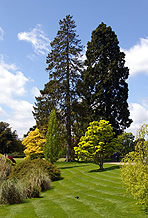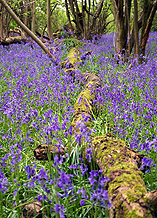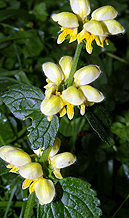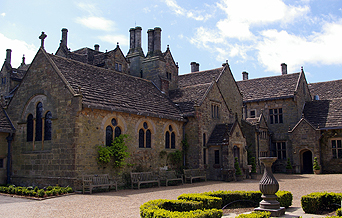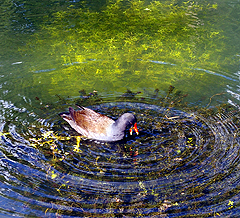Frank's travels around Britain 2009.
Bluebell time around Kent.
 Centred around Kent, I travelled across southern counties & bluebells where
everywhere. Luckily I use a lot of side roads & country lanes and it was
delightful to see these wild flowers on every bank & in every wooden glade. The
other bit of luck that followed me ... I had good weather again. Those Gods have
smiled down on many of my breaks!
Centred around Kent, I travelled across southern counties & bluebells where
everywhere. Luckily I use a lot of side roads & country lanes and it was
delightful to see these wild flowers on every bank & in every wooden glade. The
other bit of luck that followed me ... I had good weather again. Those Gods have
smiled down on many of my breaks!
For some reason I have taken an interest in windmills, probably realising how
photogenic they are! Many are on private property & understandably, they have
very limited access times. But as a piece of history, I am grateful to all those
people who preserve them. The most complete & undeniably attractive was
the Old mill at Outwood, reputed to be
the oldest windmill in Britain which is still working. As it says on the
website,
It was built in 1665 and is what is
known as a Post Mill; the whole body, weighing around 25 tons, rotates on a
central post made of a single enormous oak tree, to bring the mill round into
the wind. There is a very attractive picture of the mill pond on the website,
because the mill is in-between two private houses, I wasn't able to get this. No
doubt, on a Sunday when the place is open, you'll have access to the grounds &
can get great pictures of this beautiful piece of history.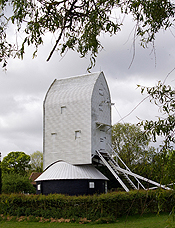
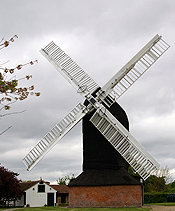 The
second one was at Lowfield Heath. Well that's what its called, but its says
Charlwood & I reckon it's by Rush Hill village! It's in a truly isolated spot,
all by itself. The time I visited, the sails were off but it still made an
impressive sight.
The
second one was at Lowfield Heath. Well that's what its called, but its says
Charlwood & I reckon it's by Rush Hill village! It's in a truly isolated spot,
all by itself. The time I visited, the sails were off but it still made an
impressive sight.
One of the first things you learn about Windmills is that they are not easy to
find! No matter where they are on a map, its never accurate enough to drive
straight to. Sat nav is helpful but there is no substitute for getting out &
asking someone. Neither of the two I hunted down were in Kent, I started
out early & worked my way back!
Right major hint coming up! Go to see the windmill early in the morning. One,
it's better light & two, there will be a postman on his route who actually knows
stuff .... there is seldom anyone else to ask, nobody walks anywhere nowadays!
Although
it's here I'd like to give thanks to a friendly pair who gave me very good
directions to the Lowfield Heath mill & helped me on my way. It was particularly
notable that the man had a white stick and although his sight may be dimmed, his
directions certainly weren't!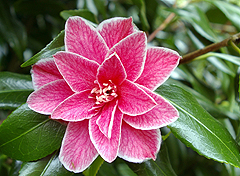
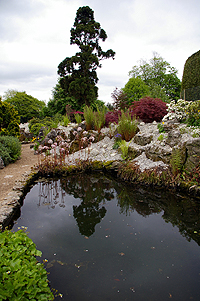 On
the way back I called in at Emmetts Garden to see if I could get some colour
into the photographs, as I was blessed with sunshine. What a good idea that was!
Late spring is a wonderful time to see the trees full of green & all the early
flowers out.
On
the way back I called in at Emmetts Garden to see if I could get some colour
into the photographs, as I was blessed with sunshine. What a good idea that was!
Late spring is a wonderful time to see the trees full of green & all the early
flowers out.
Emmetts Garden was farmland until 1860 when the present house was built. (The
three-storey Victorian villa and garden immediately surrounding it are not open
to visitors.) The name 'Emmetts' comes from the old local word for the giant
anthills which filled the woodlands until the 1950s. This may have influenced
Frederick Lubbock's decision to purchase the garden as his eldest brother -
John, Lord Avebury - was a world expert on ants. Which all goes to show, you
learn something everyday. I thought Emmetts was a Cornish word for the ant but
some say it's "old English".

Emmetts Garden covers an area of about 4 acres at the highest point in Kent on
the 600 foot sandstone ridge. It is not so much a garden as an arboretum, it has
a Victorian house that is not open to the public. Beside the formal part of the
garden is a further 14 acres of wooded valley which is open to the public.
The Great Storm of 1987 sadly brought down many of the old trees and shrubs
planted by Lubbock, with the notable exception of the 100ft-high Wellingtonia
which has the highest tree top in Kent. However, an active programme of
replanting is gradually restoring the character of the garden. Colour rages
throughout this place. It should be said now, I know more about quantum physics &
brain surgery than I know about plants & gardening, but as they used to say about
art .... I know what I like it when I see it. There was what looked like a new or
extended rock garden. Maybe when it is mature it will look better, but I always
thought rock gardens should look like a natural rock outcrop. This looks vaguely
like gravel overlaid with bigger lumps. (Please remember this mild criticism
comes from a man who thought a bouquet of hyacinths was a women off television).
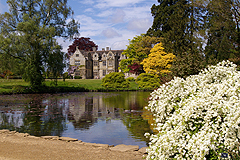 The
next day I found Wakehurst Place. For some reason I can't define, this is laid
out in such a way that you are constantly tempted to go round the next corner. I
spent hours in this place. It is a real joy to just relax & absorb on a sunny
day. Wakehurst Place is an adapted sixteenth century house with a mainly
twentieth century garden. Advertised as 'Kew in the country' the garden belongs
to the National Trust and is managed by the Royal Botanic Gardens. It is such a
credit to them. I am not surprised to see that in 2004/05 it was the Trust's
most visited property for which admission was charged, over 420,000 visitors
The
next day I found Wakehurst Place. For some reason I can't define, this is laid
out in such a way that you are constantly tempted to go round the next corner. I
spent hours in this place. It is a real joy to just relax & absorb on a sunny
day. Wakehurst Place is an adapted sixteenth century house with a mainly
twentieth century garden. Advertised as 'Kew in the country' the garden belongs
to the National Trust and is managed by the Royal Botanic Gardens. It is such a
credit to them. I am not surprised to see that in 2004/05 it was the Trust's
most visited property for which admission was charged, over 420,000 visitors
At the top of the property is the most attractive of houses. Not outstandingly huge but quite satisfying from every angle. The top area past the house is a series of individual gardens like the bog area, or a waterfall to set off an iris garden. As you go from the house & its top lake, the water falls down to a large bottom lake via the most natural of woodland areas. Its laid out brilliantly & you find the map gives so much information & the trees are a sight to behold. Acres & acres of bluebells stretch in every direction. I walked the whole length because it tempts you to do it! If your 70 & don't take advantage of the many seats & viewing areas, you may have to call out a rescue helicopter with oxygen & a heart resuscitator near the end. Take your time, enjoy the peace & quiet (midweek is best) & absorb an English woodland in early May.

